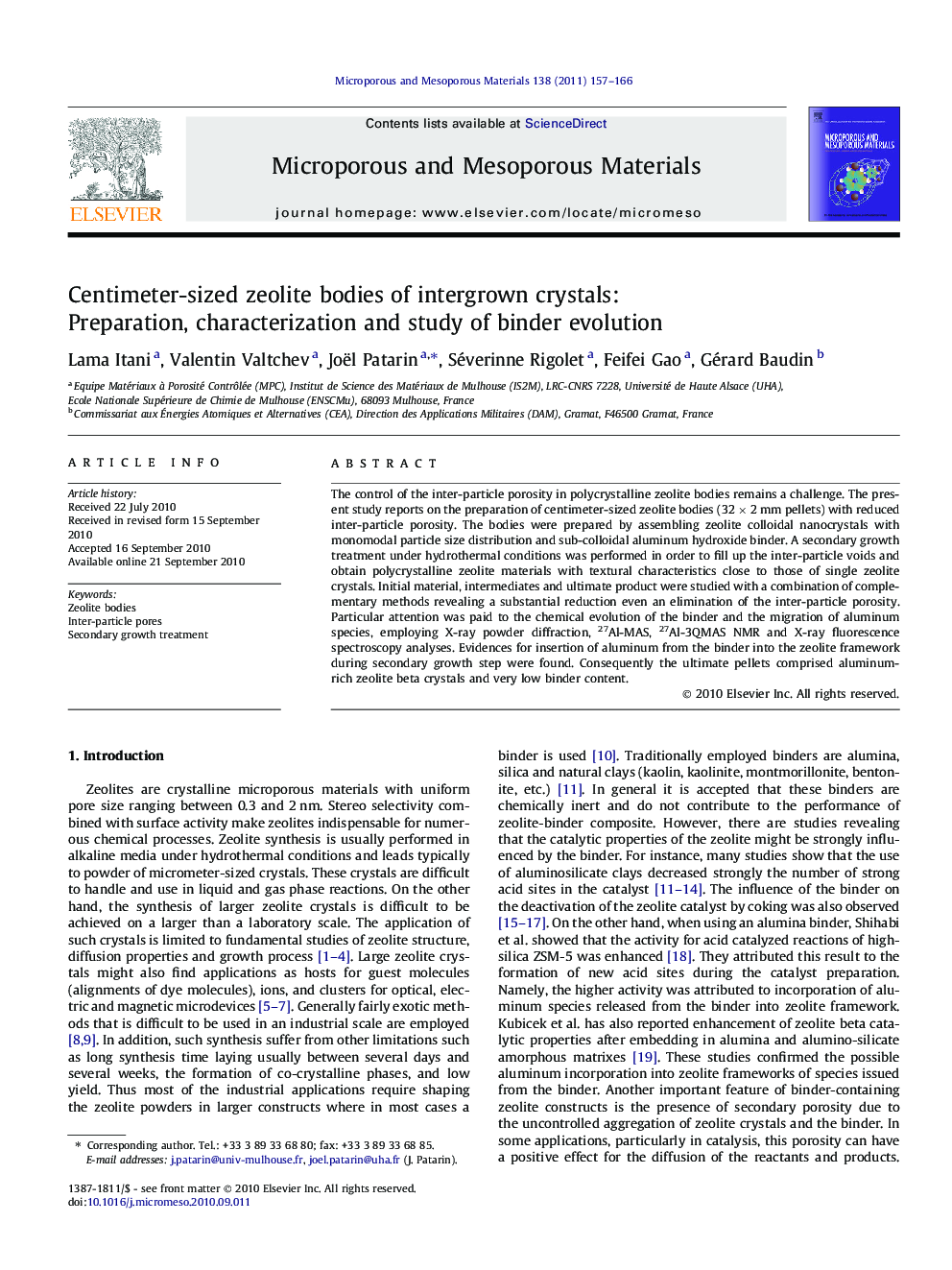| کد مقاله | کد نشریه | سال انتشار | مقاله انگلیسی | نسخه تمام متن |
|---|---|---|---|---|
| 74828 | 49101 | 2011 | 10 صفحه PDF | دانلود رایگان |

The control of the inter-particle porosity in polycrystalline zeolite bodies remains a challenge. The present study reports on the preparation of centimeter-sized zeolite bodies (32 × 2 mm pellets) with reduced inter-particle porosity. The bodies were prepared by assembling zeolite colloidal nanocrystals with monomodal particle size distribution and sub-colloidal aluminum hydroxide binder. A secondary growth treatment under hydrothermal conditions was performed in order to fill up the inter-particle voids and obtain polycrystalline zeolite materials with textural characteristics close to those of single zeolite crystals. Initial material, intermediates and ultimate product were studied with a combination of complementary methods revealing a substantial reduction even an elimination of the inter-particle porosity. Particular attention was paid to the chemical evolution of the binder and the migration of aluminum species, employing X-ray powder diffraction, 27Al-MAS, 27Al-3QMAS NMR and X-ray fluorescence spectroscopy analyses. Evidences for insertion of aluminum from the binder into the zeolite framework during secondary growth step were found. Consequently the ultimate pellets comprised aluminum-rich zeolite beta crystals and very low binder content.
Figure optionsDownload as PowerPoint slideResearch highlights
► Synthesis of centimeter-sized zeolite bodies.
► Assembling of zeolite colloidal nanocrystals.
► Control of the inter-particle porosity.
► Direct evidence on the insertion of aluminum from the binder into the zeolite framework by solid state NMR spectroscopy.
Journal: Microporous and Mesoporous Materials - Volume 138, Issues 1–3, February 2011, Pages 157–166